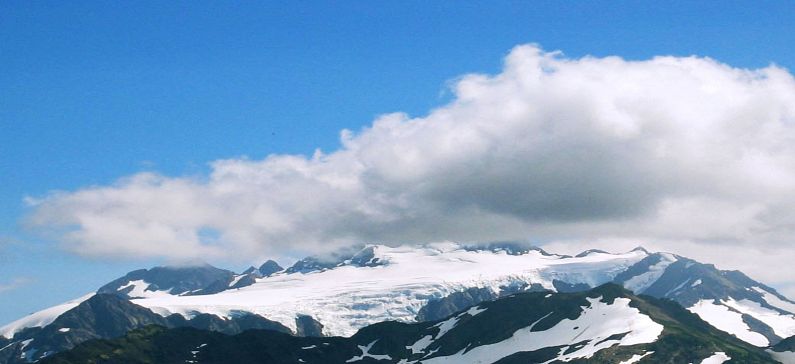
A Greek park among Europe’s Top most spectacular National Parks
When visiting Europe, many travelers tend to automatically envision its cities, like Paris, Rome and London, the endless museums, nightlife, historic sites, and perhaps, castles. But just like here in the U.S., Europe is home to a multitude of beautiful national parks. While you’re there, why not enjoy the opportunity to visit one or more, providing a great way to experience picture-perfect landscapes, enjoy fresh air, peace and quiet. The website tripstodiscover.com suggests the best national parks in Europe, in the 5th place is a Greek national park.
1. Vatnajökull National Park, Iceland
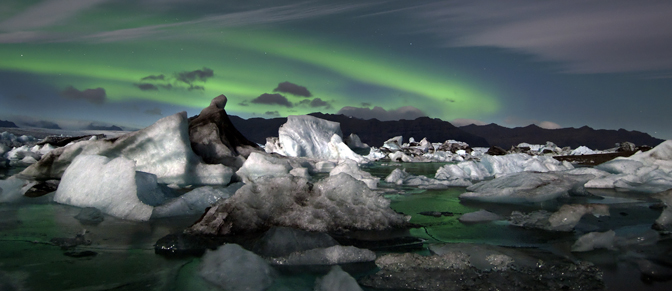
Iceland is all about out-of-this-world scenery, although its coastal capital of Reykjavik is renowned for its late-night clubs, bars and museums that trace its Viking history. Once you’ve explored the city, you’ll want to put its most stunning sights and attractions on your itinerary, including Vatnajökull National Park, a 5,300-square-mile park which offers the unique opportunity to experience a wide range of contrasting natural wonders characterized by the perpetual struggle of fire and ice. Here you’ll see the largest glacier in Europe, Vatnajökull, which lends its name to the park, with the white glacier descending to black sands, fiery streams erupting from frozen ice banks and the country’s highest mountain towering over its deepest proglacial lake. Years of erosion have left incredible ice formations on the massive ice sheet that covers nearly 13 percent of the country, which ice climbers can explore with local guides. The park is also home to Glacier Lagoon, Jökulsárlón, one of Iceland’s greatest natural wonders. Massive blocks of ice constantly break off the glacier, while large icebergs float across the lagoon.
2. Goreme National Park and The Rock Sites of Cappadocia, Turkey
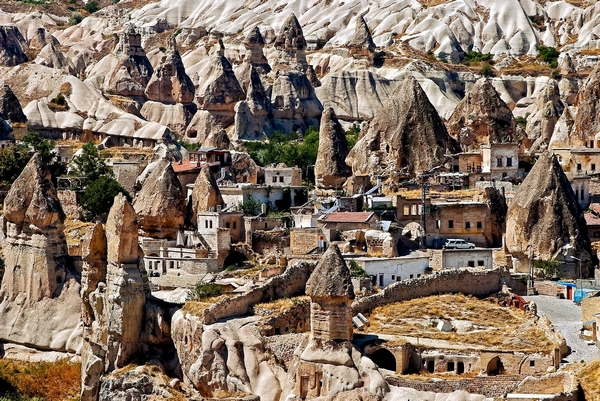
Goreme National Park is an amazing and unique design of nature. This striking landscape was entirely sculpted by erosion, with the valley and its surroundings filled with rock-hewn sanctuaries that offer evidence of Byzantine art in the post-Iconoclastic period. The dramatic, unusual rock formations for which the park is famous, resemble columns, pillars, obelisks, needles and fingers, reaching up to 130 feet tall. With the smooth irregularity of the formations, they appear as if they’ve been sloppily molded out of clay. The hermitage of Simeon monks dedicated a chapel which was carved into a three-headed fairy chimney to Saint Simeon, while some of the earth pillars in the area were hollowed out and used as refuges for hermits. Cappadocia has been the seat of several civilizations and covers underground cities, with some of the most extraordinary including the regions ofKaymakli, Derinkuyu, Mazl Ozkonak and Tatlarin. Used as sanctuaries for long periods, they were recently renovated and made available to visitors.
3. Plitvice Lakes National Park, Croatia
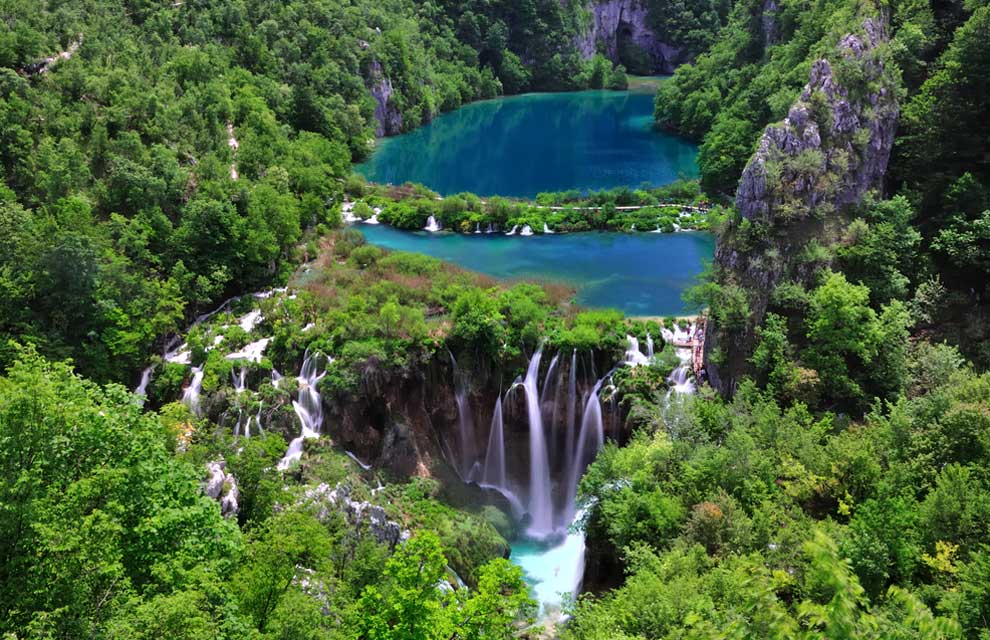
Not well-known by those outside the region, Plitvice Lakes National Park is one of the most breathtaking natural landmarks in all of Eastern Europe, if not the entire continent. Its maze of lakes and waterfalls, lush greenery and clear azure waters, is so fantasy-like it seems as if it were computer generated and plunked right down in Croatia. Located in the country’s rugged interior, the 16 terraced, crystalline lakes are laced together by waterfalls and miles of plank walks. The mineral-rich waters carve through the rock, depositing tufa in continually changing formations while the pathways wind around the edges, underneath and across the gurgling water. You can choose from several different paths around the lakes that range in time and difficulty. A complete run through of the park on Trail H takes upwards of six hours – while it can be done in as few as four if you move quickly, you’ll want to take your time to revel in the scenery. Some trails also offer boat transfers and bus transfers which can slice a couple of hours off the trek
4. Belluno Dolomites National Park, Italy
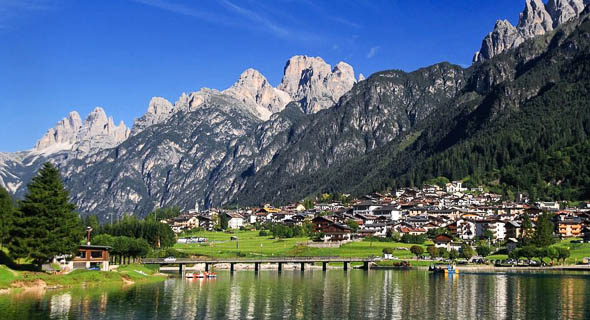
Belluno Dolomite National Park, or Dolomiti Bellunesi Parco Nazionale as Italian’s refer to it, is a marvel that surpasses just about any of the country’s famed museums. Though the park is fairly easy to access, just an hour and a half’s drive from Venice, it remains largely wild and unspoiled. Named for the Dolomites, the breathtaking mountain range that spans five northeastern territories, visitors can enjoy hiking, biking, winter sports and wildlife watching. The park itself can only be driven by car over two roadways, but hiker’s will find a true paradise with miles and miles of hiking trails, including the Dolomite mountain trail No. 1 which winds through the park. The ancient town of Belluno, with 37,000 residents is the main town in the eastern Dolomites and makes an ideal place to base your stay
5. Olympus National Park, Greece

This 92-square-mile park is home to one of the most famous mountain ranges in the world – the 52 peaks of Mount Olympus that were believed to be the home of the gods by the inhabitants of classical Greece. The village of Dion, which sits on the mountain’s flanks, was a Macedonian holy city where King Archelaus held nine days of games to honor Zeus, several centuries B.C. Today, it houses a remarkable archaeology site where work is ongoing, along with an archaeological museum which features much of the region’s rich Classical history. The park is also home to numerous animal species like lynx, wolves, fox, jackals and wild boar, along with more than 108 bird species as well as over 1,700 plants that can be found on Mount Olympus, representing 25 percent of all Greek flora.







